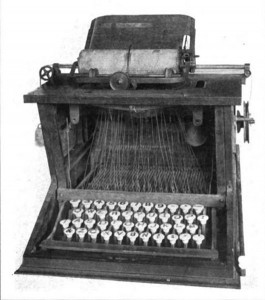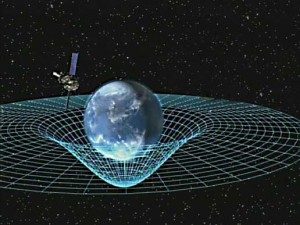 The typewriter, an invention that had transformed businesses and remained a staple for over 100 years is officially obsolete. Godrej and Boyce in Mumbai, India has closed it’s doors after it’s annual production fell below 1000 units. The company has cited that the most recent dip in sales resulted from Indian based businesses transferring over to computers. The invention of the typewriter cannot be attributed to one person, it was an evolution of an idea carried out by several independent inventors who were often in competition with each other over several decades. The first typewriter to be commercially successful was conceived in 1867 as a joint venture by C. Latham Sholes, Carlos Glidden, and Samuel W. Soule in Milwaukee, Wisconsin. They in turn sold the patent to Densmore and Yost for $12000, who made an agreement with E. Remington and Sons to produce the machine in 1873.
The typewriter, an invention that had transformed businesses and remained a staple for over 100 years is officially obsolete. Godrej and Boyce in Mumbai, India has closed it’s doors after it’s annual production fell below 1000 units. The company has cited that the most recent dip in sales resulted from Indian based businesses transferring over to computers. The invention of the typewriter cannot be attributed to one person, it was an evolution of an idea carried out by several independent inventors who were often in competition with each other over several decades. The first typewriter to be commercially successful was conceived in 1867 as a joint venture by C. Latham Sholes, Carlos Glidden, and Samuel W. Soule in Milwaukee, Wisconsin. They in turn sold the patent to Densmore and Yost for $12000, who made an agreement with E. Remington and Sons to produce the machine in 1873.
Monthly Archives: May 2011
Osama Bin Laden is Dead
 America’s quest for vengence is at a close this morning as the world woke to the news that U.S. forces had killed fugitive Osama bin Laden last week. In a live press conference last night, U.S.A. President Barack Obama reported that the U.S. was in possession of the Al-Qaeda founder’s body. In an attack ordered last week in Abbottabad, Pakistan covert U.S. troops killed Osama in a firefight unauthorized by the Pakistan government. According to reports by the United States government, U.S. forces suffered no losses or injuries while Osama, three men who were with him, and a woman who was used as a human shield were shot and killed.
America’s quest for vengence is at a close this morning as the world woke to the news that U.S. forces had killed fugitive Osama bin Laden last week. In a live press conference last night, U.S.A. President Barack Obama reported that the U.S. was in possession of the Al-Qaeda founder’s body. In an attack ordered last week in Abbottabad, Pakistan covert U.S. troops killed Osama in a firefight unauthorized by the Pakistan government. According to reports by the United States government, U.S. forces suffered no losses or injuries while Osama, three men who were with him, and a woman who was used as a human shield were shot and killed.
A U.S. official stated that Osama’s body is to be buried at sea according to Islamic traditions. The U.S. State Department has issued a worldwide alert for caution, citing possible retaliation from Al-Qaeda. Crowds gathered outside the White House and New York’s Times Square to celebrate the terrorist’s death.
Gravity Probe B confirms Einstein Genius
 The fine folks at NASA have confirmed two of the predictions formulated from Albert Einstein’s general theory of relativity. Through the use of ultra-precise gyroscopes housed in a satellite orbiting the earth, scientists have measurable results that indicate both the geodetic effect and frame dragging do occur. The geodetic effect is the warping of space and time around an object, in this case the earth. The most simple way to visualize this, is the bowling ball on a mattress example. As you look closer to the ball, you will see increased curvature in the mattress. The effect know as frame dragging takes that same concept and factors in the rotation of the earth. Imagine a ball floating in honey, if you were to rotate the ball you would see the honey begin to swirl around the ball.
The fine folks at NASA have confirmed two of the predictions formulated from Albert Einstein’s general theory of relativity. Through the use of ultra-precise gyroscopes housed in a satellite orbiting the earth, scientists have measurable results that indicate both the geodetic effect and frame dragging do occur. The geodetic effect is the warping of space and time around an object, in this case the earth. The most simple way to visualize this, is the bowling ball on a mattress example. As you look closer to the ball, you will see increased curvature in the mattress. The effect know as frame dragging takes that same concept and factors in the rotation of the earth. Imagine a ball floating in honey, if you were to rotate the ball you would see the honey begin to swirl around the ball.
To prove these predictions, scientists had to measure their effects within milliarcseconds, a margin of error about the width of a human hair over 10 miles. The required precision is exactly why Einstein himself told the scientific community that they should not bother trying to perform laboratory experiments to find the effects. NASA conducted their tests by using a “start tracker” to point on end of the gyroscope axis at a star, IM Pegasi, while in a polar orbit above the Earth. Over the course of a year, scientists found the spin axis had changed about 6600 milliarcseconds. Their findings confirm that the Earth’s mass and rotation had effected the orientation of the gyroscope’s axis and thus proving the predictions true.
The ingenuity of creating this experiment is a great example of human innovation, but the fact Einstein derived at such finite detail through theoretical science provides further proof that he was the greatest mind in our history to date. (For those who doubted it)
The Three-Track System
The Three-Track System: Proposed Changes to the U.S. Patent Revue Process
Inventors seeking U.S. patents may be able fast-track their applications’ reviews by paying an additional surcharge. The unspecified fee will be levied on top of the existing charge for a patent review and would likely result in a final decision within a year.
The proposed changes to the U.S. Patent and Trademark Office’s review process come in response to pressure to curb wait times which have skyrocket in the past several years. In 2003, inventors could expect a decision in just under 27 months, on average, compared with nearly 35 months in 2009. As patent office chief David Kappos points out, “Not every application needs to go at the same speed.”
The new system would divide the queue into three “tracks”. The middle track is similar to the standard process used today, but for an additional fee applicants will be able to have their application moved onto the fast track where they can expect, ideally, to have a first action on the patent’s merits within four months and after given priority status, a final decision within a year. Conversely, applicants not in a rush to get approval may, for a reduced fee, put their application into the third, slowest line, where they can leave it for up to 30 months before being examined. Kappos has also tossed around the idea of splitting up the slow track and its fees into an application and a search stage, and later if the applicant wishes to move forward, the full examination stage.
The change in the USPTO’s system would not mark the first time a government department has charged fees to expedite applications. There is already a similar system in place for passport applicants to speed things up for an extra $60, and for the last year or so the patent office has selectively offered the fast track to applicants working on “green” technologies and those with multiple applications who are willing to drop one.
Critics of the proposed changes worry that the new system will favor big businesses who can afford to pay the additional fees for their inventions, and leave the little guy in the dust. However, small-scale inventors currently pay 50% less than the standard $1090 application fee, and Kappos has suggested that small businesses may, with Congressional approval, receive these same discounts on the fast track, which would keep the playing field as level as it currently is under the first-come, first-served system. Fast track fees will likely be set prohibitively high in order to prevent big businesses, who will receive no discount, from gaining the advantage as a result of the changes.
It has been proposed that the slow track also may give an unfair advantage to some by enabling businesses to hide their inventions from other companies, thereby slowing the traditional process of innovation where one development leads to another. The American Intellectual Property Law Association’s Q. Todd Dickinson, who raised this concern, suggested the problem may be avoided if there were a provision making it mandatory that applications be published within 18 months of filing for a patent, regardless of approval.
The new three-track system stands to solve two problems at once: bottlenecks in the patent review process and the U.S. Patent and Trademark Office’s ongoing money woes. It is part of a greater effort by Kappos and the Obama administration to improve the overall efficiency of the patent office. Under the current process, everyone alike is suffering due to the bottleneck in applications. With the new system, Kappos hopes to be able to bring wait times for the middle track to less than 20 months, which would mark the lowest in nearly a decade, with the added benefit that fees for fast-tracking projects will inject some cash into the struggling USPTO’s coffers.
Kappos’ proposed changes may also ease another current problem in which delays have become so long that by the time patents are approved, the technologies concerned are no longer necessarily new. Such incidents have led to lengthy and expensive legal battles, the costs of which far exceed the new fees, which in any case are optional.
Google Pays $5m in Patent Infringement Case
 A Texas jury has ruled against the search engine giant in recent patent infringement case involving the Android mobile operating system. The material in question is also used in linux based servers utilized by Google.
A Texas jury has ruled against the search engine giant in recent patent infringement case involving the Android mobile operating system. The material in question is also used in linux based servers utilized by Google.
This judgement could have a crippling effect on the rapidly expanding open source community. As development of the free (as in speech, not beer) software is often done by large organizations such as Google, Yahoo, Amazon, and others, fear of faulty but expensive patent threats like this one could slow progress down to a crawl.
The victorious Bedrock Computer Technologies is guilty of attacking other tech giants on similar patent infringement charges, and is not expected to stop with Google. It is extremely profitable for a firm to hire a team of IT professionals to peruse code for protected property, and seek penalties from users of that software. The investment costs much less than the $5 million awarded in this case.





